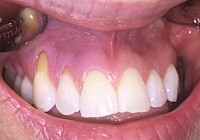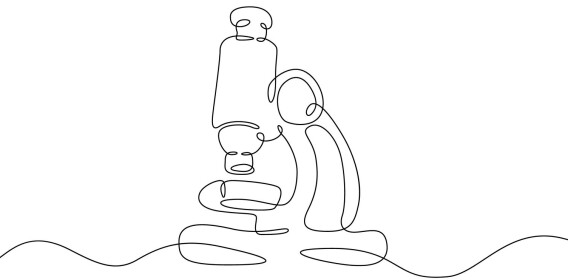
Why you should always rinse your fruit and vegetables – even those from your own garden
Even clean-looking produce can carry bacteria, making proper washing essential for your safety, according to the Norwegian Food Safety Authority.
A shiny, sun-ripened tomato from the garden or a grape straight from the package. It must be fine as long as it looks clean – right?
As the fruit and berry season arrives, some of us may overlook the potential risks.
‘While most people are aware of the dangers raw meat and fish can pose to health, many consider fresh produce to be ‘safe’,’ Primrose Freestone wrote about washing fruit and vegetables in The Conversation.
She is a biologist at the University of Exeter.
“All fruit and vegetables should be washed, especially those from abroad,” senior adviser Catherine Signe Svindland of the Norwegian Food Safety Authority tells sciencenorway.no.
There are two main factors that determine how cautious you should be, according to Svindland: The texture of the peel and where the fruit or vegetable comes from.
Ideal conditions for bacteria
Tomatoes, with their smooth surface, allow water and dirt to roll off easily. In contrast, the rough skin of cantaloupes has numerous pores and cracks where bacteria can flourish.
“There have been several outbreaks of illness linked to this type of melon. Bacteria can enter the flesh when you cut into the melon,” says Svindland.
Another reason to wash cantaloupes extra carefully is that, unlike most fruit which are acidic and less appealing to bacteria, melons are neutral.
“They also contain a lot of water and sugar – making them an ideal environment for bacteria,” says Svindland.
Should be dry before cutting
One of the bacteria to be concerned about is listeria. It grows faster the warmer it is, up to 60 degrees Celsius, Svindland explains.
Listeria can also multiply in fridge temperatures. This means that if you cut a melon and store it in the fridge without washing it properly, there is a risk that bacteria could spread in the flesh.
“It’s a good idea to wash and dry the melon so the skin is dry before slicing. It’s also good practice to wash the knife and cutting board afterward. You can treat melon similarly to raw meat,” advises Svindland.
According to the Norwegian Institute of Public Health, most people occasionally ingest listeria bacteria through food. Healthy individuals with a normal immune system usually do not become ill.
However, those with weakened immune systems are more susceptible to serious illness.
Could become contaminated during irrigation
Some imported fruit and vegetables should be heat-treated, even though they are often eaten raw. This includes herbs from Southeast Asia, as well as imported sugar snap peas, baby corn, and asparagus.
Svindland explains that these vegetables are grown in open fields, where they are exposed to environmental contamination.

While Norway has a reliable supply of clean water, warmer countries often face water scarcity, meaning clean water is not always available. Contamination can also occur during harvesting and transportation.
In many other countries, there's not the same tradition of eating these vegetables raw as we have in Norway, notes Svindland.
Bacteria and viruses are not visible. So how can we be sure we’re getting rid of them?
Give them a quick boil
‘First, wash your hands. This prevents germs on your skin from contaminating the produce you’re cleaning,’ Freestone advises in The Conversation.
As for the fruit and vegetables, she says the simplest and safest method is to wash them by hand under cold, running water. You can gently scrub with your hands until the surface looks clean.
“For tomatoes, a thorough rinse under tap water is usually sufficient,” says Svindland of the Norwegian Food Safety Authority.
She confirms that it’s fine to rub and scrub fruits and vegetables that can handle it.
“If you’re particularly worried, you can soak them in water with vinegar. This offers the highest level of protection,” she says.
Strong vinegar is the most effective at killing bacteria. The Norwegian Food Safety Authority recommends using 600 millilitres of 35 per cent vinegar essence per litre of lukewarm water for 10-15 minutes. Just remember, this strong vinegar is corrosive when undiluted.
Of course, vinegar is not suitable for everything, as it can affect the taste.
Frozen berries also carry some risk, as certain bacteria and viruses can survive freezing.
“There have been several outbreaks worldwide linked to frozen raspberries. That’s why we recommend giving them a quick boil,” says Svindland.
Homegrown vegetables: Do they need to be washed?
Homegrown vegetables are a luxury for many gardeners. Nothing beats the taste of a carrot pulled fresh from the ground and eaten on the spot.
Or a juicy, organic apple from your own tree.
“If it’s not grown in a greenhouse, you have no control over what it might have been exposed to,” says Svindland. “Usually, eating a carrot is safe, but there’s always a chance the soil it grew in could pose a risk.”

The risk is likely small, but there could have been a bird or animal carrying an infection that came into contact with the apple or vegetable garden. That's why it's a good idea to give it a rinse as well.
Potatoes with a bit of soil on them, however, can be boiled without needing to be sparkling clean. The bacteria will die during cooking anyway.
Rinsing is often enough
“For healthy adults, it’s primarily fresh herbs from Southeast Asia that you might want to consider soaking in vinegar. Otherwise, most people can tolerate quite a lot,” says Svindland.
She highlights that rinsing is usually sufficient, especially if you use warm water. You can use water as warm as the fruit or vegetable can handle.
“A good rule of thumb is to rinse for 20 seconds,” Nofima researcher Solveig Langsrud told Godt.no in 2022 (link in Norwegian).
“If you’re serving very young children, the elderly, or anyone particularly vulnerable, you might want to use vinegar to be extra safe.”
Studies have shown that rinsing in cold water removes 80 per cent of bacteria. Warmer water is even more effective, she adds.
Recommends organic lemon peel
The Norwegian Food Safety Authority monitors pesticide levels in fruit and vegetables, ensuring that what is sold is safe to eat.
However, one thing to keep in mind is that Svindland and her colleagues at the Norwegian Food Safety Authority frequently receive questions about using citrus peels for making marmalade or other recipes.
“Citrus fruits aren’t typically grown with the intention of consuming the peel. So if you plan to use the peel, it’s best to choose organically grown citrus fruits that haven’t been sprayed,” she says.
———
Translated by Alette Bjordal Gjellesvik
Read the Norwegian version of this article on forskning.no






































